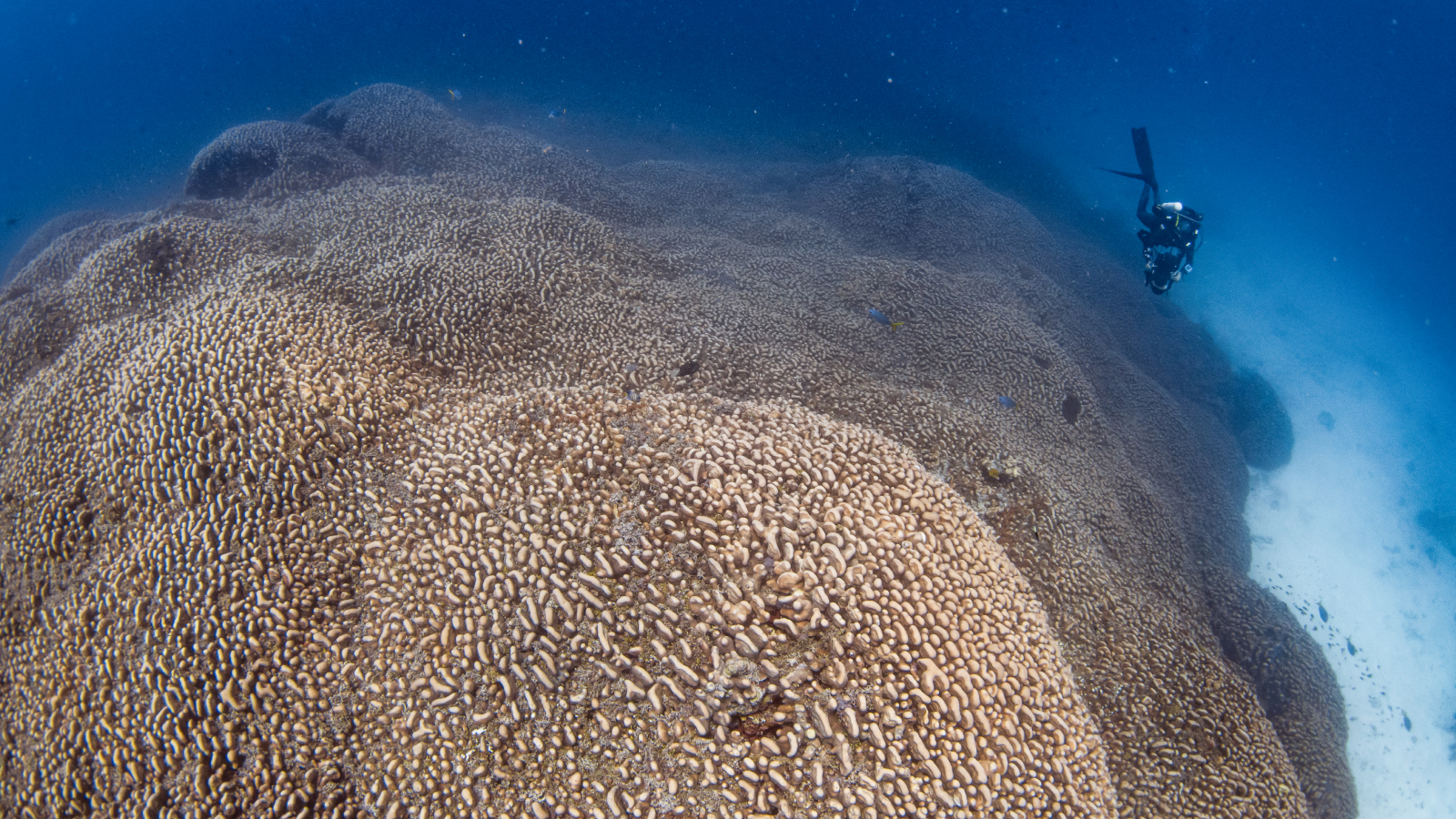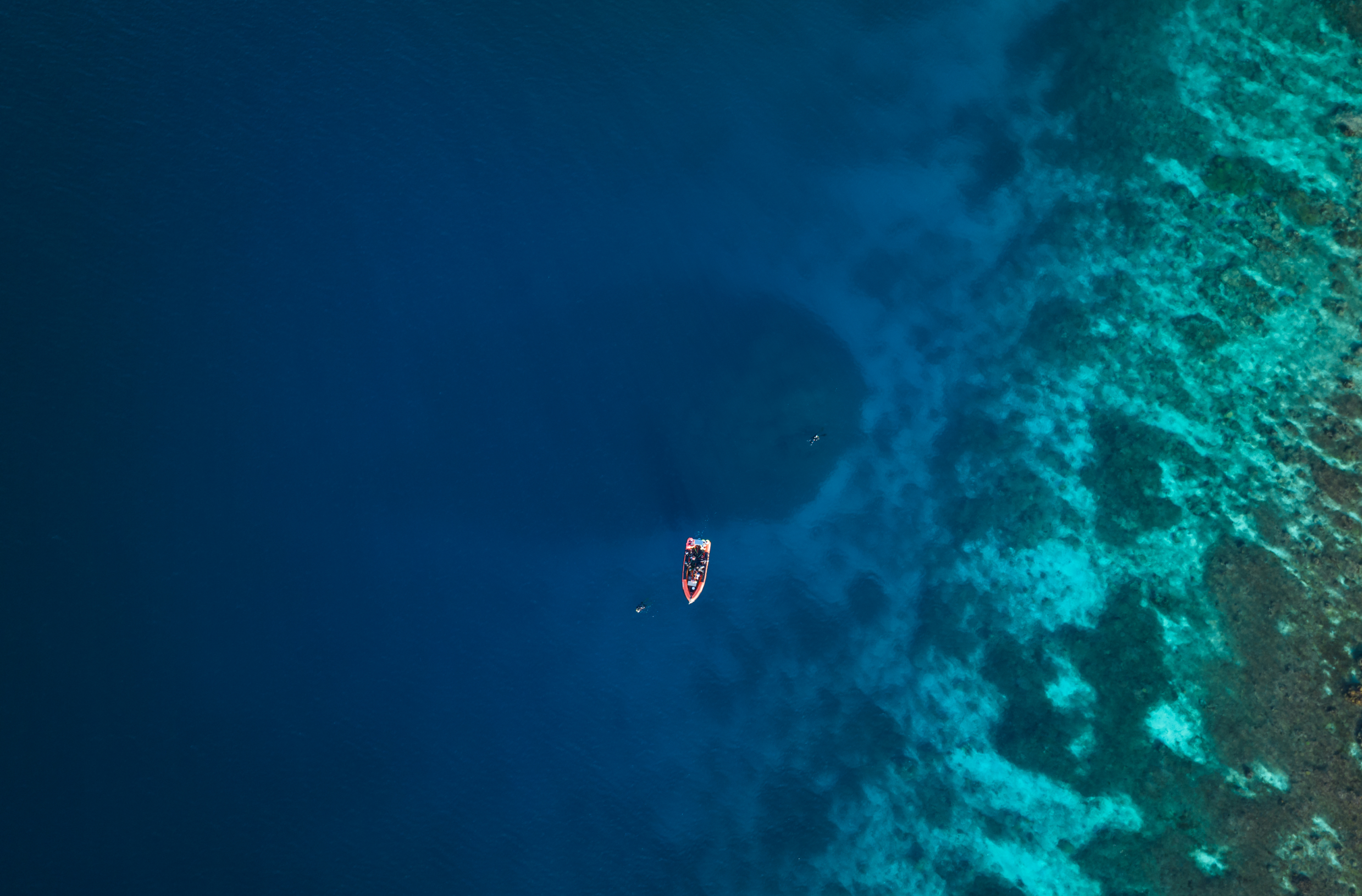
In the depths of the southwest Pacific Ocean, researchers have discovered the largest coral ever documented. Spanning an impressive 111 feet (34 meters) in width, 105 feet (32 m) in length, and standing 18 feet (5.5 m) tall, this colossal organism — so large it's even visible even from space — resides near the Three Sisters Island group in the Solomon Islands.
The coral, identified as Pavona clavus, is a single, standalone structure, unlike the sprawling networks that typically form coral reefs. Scientists estimate it's around 300 years old, making it not just a biological marvel that spans the size of two basketball courts, but also a record of centuries of oceanic conditions.
"It is a natural monument that has seen the arrival of the first Europeans to these waters," San Félix, an underwater cinematographer for National Geographic Pristine Seas who was first to spot the giant coral, said in a statement.
Despite its size, the coral went under the radar until now, with even the local community reportedly not knowing of its existence.
The coral was discovered by a group of scientists from the Pristine Seas program, which carries out exploration and research projects to help protect the world's oceans. The team was studying the ocean health of the area on board the Argo research vessel when they spotted the behemoth structure.
They originally thought it might have been a shipwreck, but closer inspections revealed the vibrant marine ecosystem sheltered amongst the coral’s yellows, blues and reds. Shrimp, crabs, and reef fish rely on the coral complex for both shelter and breeding groups.
The coral is around three times bigger than the previous record holder, according to the statement. It's made up of a network of polyps, which are tiny soft-bodied creatures related to anemones and jellyfish that act as the building blocks of corals. The polyps that form the giant coral came from larvae that settled on the seafloor then multiplied over the centuries.

"Just when we think there is nothing left to discover on planet Earth, we find a massive coral made of nearly one billion little polyps, pulsing with life and color,” Enric Sala, National Geographic Explorer in Residence and founder of Pristine Seas, said in the statement. "This is a significant scientific discovery, like finding the world's tallest tree. But there is cause for alarm."
The Solomon Islands, known for hosting the second-highest coral diversity in the world, stands at the forefront of ocean conservation. The area's reefs are vital ecosystems that support marine biodiversity and act as buffers against coastal storms.
Climate-driven changes threaten the stability and health of many marine habitats, including coral reefs. As average temperatures and greenhouse emissions rise, more carbon dioxide is dissolved into the ocean, causing them to become more acidic.
Ocean acidification has led to significant coral death, reducing their ability to grow their calcium skeletons and bleaching them to a ghostly white color.
The Soloman coral's size and health offer hope, but its researchers highlight the need for further action. "For the people of the Solomon Islands, this mega coral discovery is monumental. It reinforces the importance of our ocean, which sustains our communities, traditions, and future," Ronnie Posala, Fisheries officer, Solomon Islands Ministry of Fisheries and Marine Resources, said in the statement. "Such discoveries remind us of our duty to safeguard these natural wonders, not only for their ecological value but for the livelihoods and cultural identity they provide."







